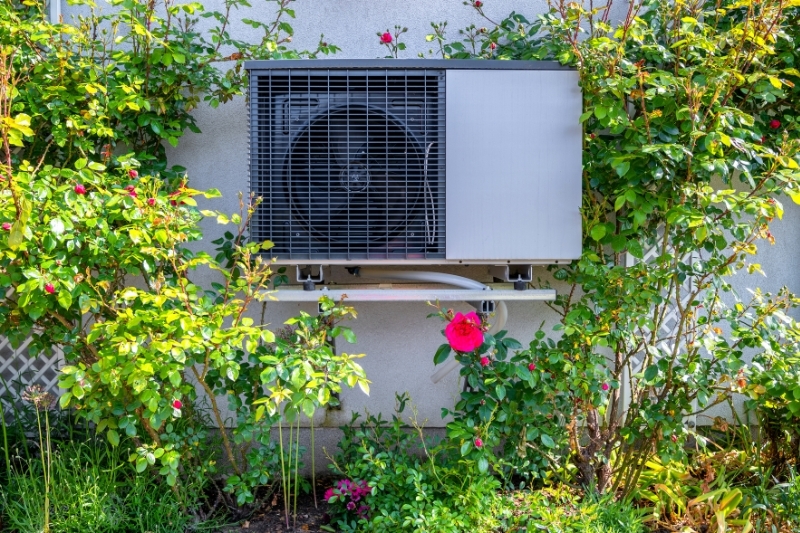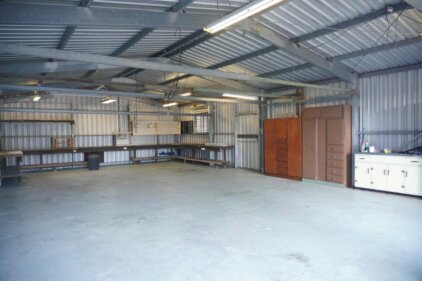One of the top priorities is to create a comfortable living environment while also saving on energy costs. Energy-efficient heating and cooling systems are the key to achieving both of these goals. These systems are designed to provide optimal heating and cooling performance while minimizing energy consumption. By investing in energy-efficient solutions, you can maximize your comfort and savings in the long run.
Energy-efficient heating and cooling systems offer several advantages over traditional systems. First and foremost, they help reduce energy consumption, resulting in lower utility bills. With rising energy costs, this can lead to significant savings over time. Additionally, these systems help reduce greenhouse gas emissions, contributing to a greener and more sustainable future. They also provide better temperature control, ensuring that your home remains comfortable year-round. By understanding the benefits of energy-efficient heating and cooling systems, you can make an informed decision when it comes to upgrading your climate control system.
Climate Control Systems
Before delving into the specifics of energy-efficient heating and cooling systems, it’s important to have a basic understanding of how climate control systems work. These systems are responsible for maintaining a comfortable indoor temperature by regulating the flow of hot and cold air. Traditional systems often rely on fossil fuels, such as natural gas or oil, to generate heat. While effective, these systems can be costly and contribute to environmental pollution.
On the other hand, energy-efficient heating and cooling systems utilize advanced technologies to minimize energy consumption. They often incorporate features such as variable speed motors, advanced thermostats, and smart controls to optimize performance. These systems are designed to deliver precise temperature control, evenly distribute air throughout the space, and minimize energy waste. By upgrading to an energy-efficient system, you can enjoy a comfortable living environment while minimizing your carbon footprint.
Smart Thermostats: The Future of Energy-Efficient Heating and Cooling
One of the key components of energy-efficient heating and cooling systems is the use of smart thermostats. These innovative devices are designed to intelligently control the temperature in your home, maximizing both comfort and energy savings. Smart thermostats offer a range of features that traditional thermostats lack, such as remote access, learning capabilities, and integration with other smart home devices.
With a smart thermostat, you can easily adjust the temperature of your home from anywhere using your smartphone. This allows you to optimize energy usage based on your schedule and preferences. Some smart thermostats even have learning capabilities, which means they can adapt to your behavior and automatically adjust the temperature accordingly. By utilizing these advanced features, you can ensure that your heating and cooling system operates at maximum efficiency, resulting in significant energy savings.
Insulating Upgrades for Improved Energy Efficiency
In addition to upgrading your heating and cooling system, it’s essential to consider the insulation of your home. Proper insulation plays a crucial role in maintaining a comfortable indoor temperature and reducing energy waste. Insulating upgrades can include adding insulation to walls, attics, and floors, as well as sealing air leaks around windows and doors.
By improving insulation, you can prevent heat transfer and air leakage, ensuring that your heating and cooling system doesn’t have to work as hard to maintain the desired temperature. This leads to improved energy efficiency and reduced energy consumption. Insulating upgrades are a cost-effective way to enhance the overall performance of your heating and cooling system while maximizing comfort and savings.
Zone Heating and Cooling: Customizing Comfort and Savings
Traditional heating and cooling systems often operate on a one-size-fits-all approach, heating or cooling the entire house regardless of individual preferences. This can result in unnecessary energy usage and discomfort in different areas of the home. Zone heating and cooling, on the other hand, allows you to customize comfort and savings by dividing your home into separate zones with individual temperature controls.
By utilizing zone heating and cooling, you can set different temperatures for different areas of your home based on usage patterns and personal preferences. For example, you can keep the bedrooms cooler during the day and warm them up before bedtime, while keeping the living areas comfortable throughout the day. This targeted approach helps minimize energy waste and ensures that each area of your home is at the ideal temperature for maximum comfort.
Integrating Renewable Energy Sources into Your Heating and Cooling System
To further enhance the energy efficiency of your heating and cooling system, consider integrating renewable energy sources. Renewable energy sources, such as solar panels or geothermal systems, can provide clean and sustainable power to your home. By generating electricity from renewable sources, you can reduce reliance on the grid and lower your carbon footprint.
Solar panels, for example, can harness the power of the sun to generate electricity for your heating and cooling system. This not only reduces your energy bills but also helps combat climate change by reducing the demand for fossil fuel-generated electricity. Geothermal systems utilize the stable temperature of the ground to efficiently heat and cool your home. By tapping into this renewable energy source, you can enjoy consistent and energy-efficient climate control throughout the year.
The Benefits of Ductless Mini-Split Systems
Ductless mini-split systems have gained popularity in recent years as an energy-efficient alternative to traditional HVAC systems. Unlike central air conditioning systems, which rely on ductwork to distribute air, ductless mini-split systems deliver conditioned air directly to individual rooms or zones. This eliminates the energy loss associated with ductwork and allows for greater temperature control.
In addition to energy savings, ductless mini-split systems offer several other benefits. They are easy to install and operate, making them a convenient option for both new construction and retrofit projects. They also provide flexibility in terms of zoning, allowing you to cool or heat specific areas of your home as needed. Furthermore, ductless mini-split systems are typically more compact and aesthetically pleasing compared to bulky central air conditioning units. With their advanced features and energy efficiency, ductless mini-split systems are a smart choice for maximizing comfort and savings.
Heat Pumps: A Versatile and Efficient Heating and Cooling Solution
Heat pumps are another energy-efficient heating and cooling solution worth considering. Unlike traditional heating and cooling systems that generate heat or cool air, heat pumps transfer heat from one place to another. In the winter, they extract heat from the outside air or ground and transfer it indoors to heat your home. In the summer, they remove heat from the indoor air and release it outside to cool your home.
The efficiency of heat pumps stems from their ability to move heat rather than generate it. This makes them more energy-efficient compared to systems that rely on combustion or resistance heating. Heat pumps can provide both heating and cooling, eliminating the need for separate systems and saving on installation and maintenance costs. They are also environmentally friendly, as they don’t produce greenhouse gas emissions during operation. With their versatility and efficiency, heat pumps are an excellent choice for energy-conscious homeowners.
Incorporating Passive Design Principles for Energy Efficiency
Passive design principles focus on optimizing the natural elements of your home to enhance energy efficiency. By strategically designing your home’s layout, insulation, windows, and shading, you can passively control the temperature and reduce the need for active heating and cooling. Passive design principles work hand-in-hand with energy-efficient heating and cooling systems to maximize comfort and savings.
Key elements of passive design include proper orientation and placement of windows to maximize natural light and heat gain, as well as insulation to minimize heat loss. Shading devices such as awnings or trees can help block direct sunlight during the summer, reducing the need for air conditioning. Natural ventilation techniques, such as cross ventilation and stack effect, can also be incorporated to promote airflow and reduce reliance on mechanical ventilation systems. By embracing passive design principles, you can reduce your energy consumption and create a more sustainable living environment.
Maximizing Comfort and Savings with Energy-Efficient Heating and Cooling Systems
Investing in energy-efficient heating and cooling systems is a smart choice for homeowners looking to maximize comfort and savings. These systems offer several advantages, including reduced energy consumption, lower utility bills, and improved temperature control. By understanding the various options available, such as smart thermostats, insulating upgrades, zone heating and cooling, renewable energy integration, ductless mini-split systems, heat pumps, and passive design principles, you can make informed decisions to create an energy-efficient home.
When it comes to upgrading your heating and cooling system, consider consulting with a professional who can assess your specific needs and recommend the best solutions. By investing in energy-efficient technologies and practices, you can create a comfortable living environment while minimizing your environmental impact. So, take the first step towards maximizing your comfort and savings by exploring the world of energy-efficient heating and cooling systems today.





